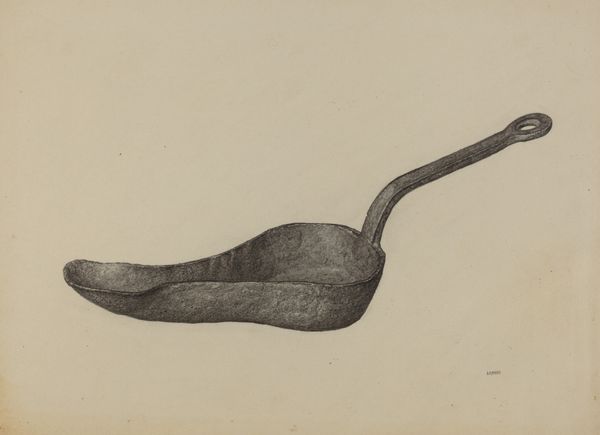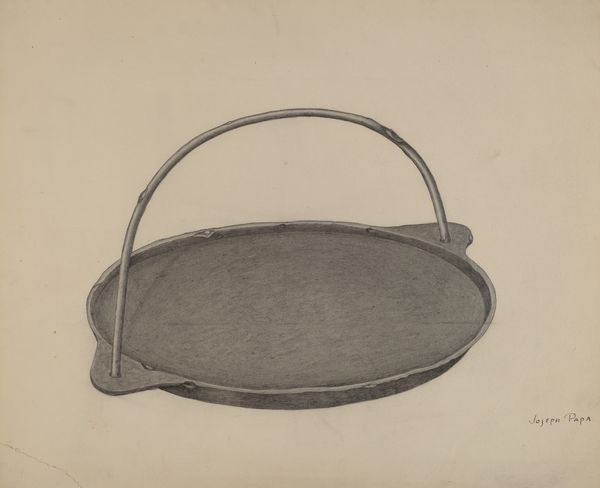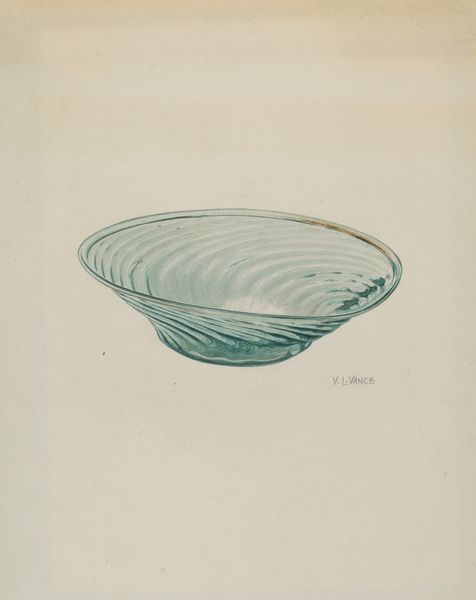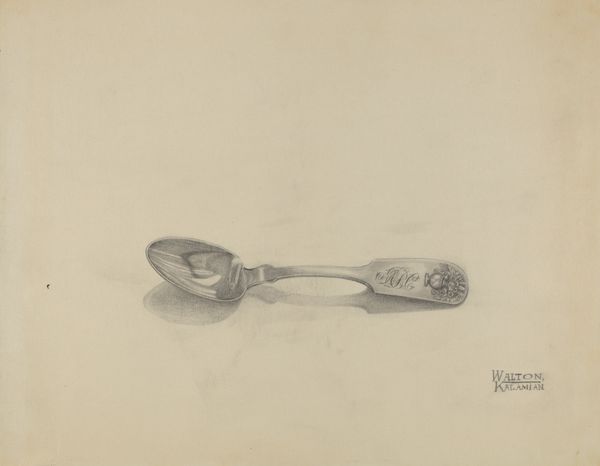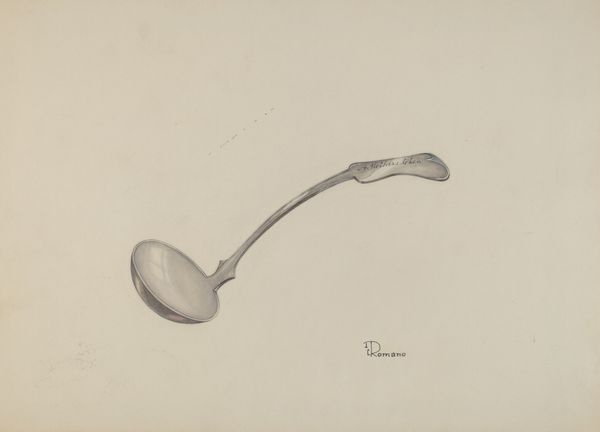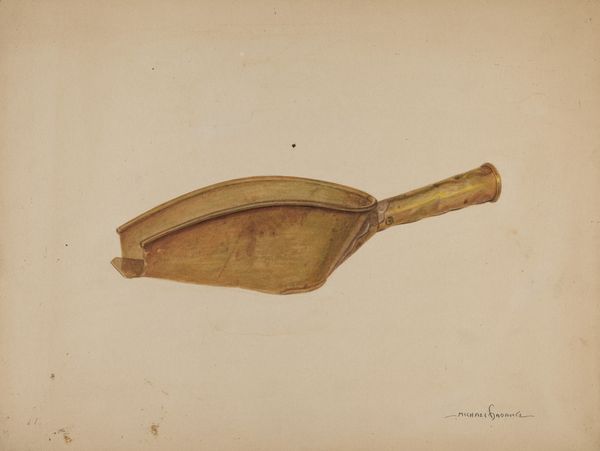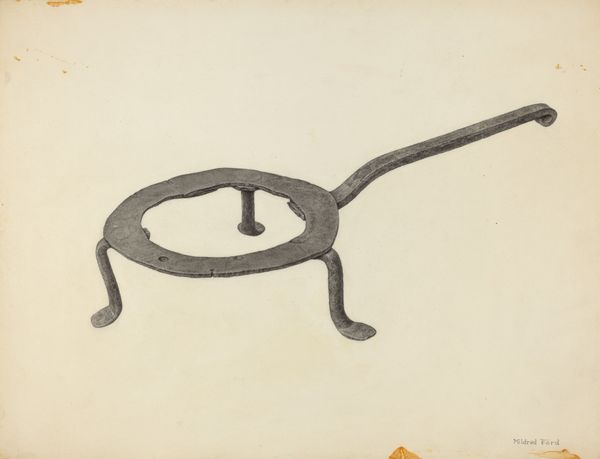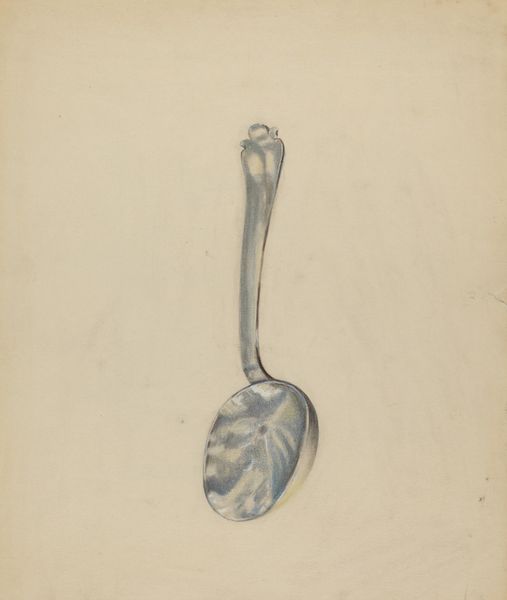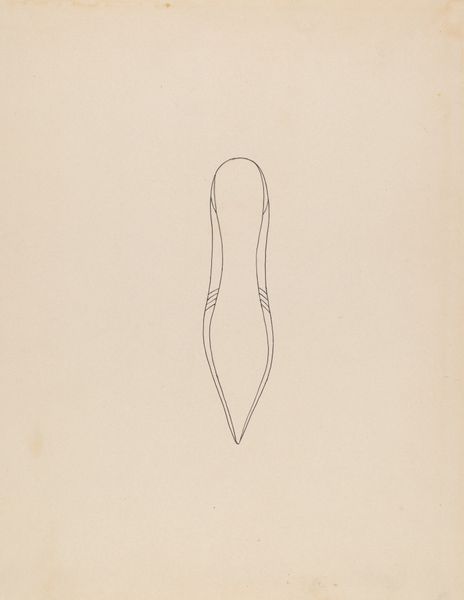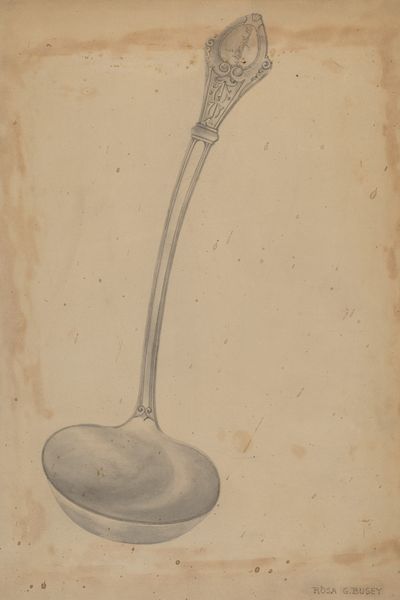
drawing, pencil
#
drawing
#
pencil drawing
#
pencil
#
realism
Dimensions: overall: 28.9 x 36 cm (11 3/8 x 14 3/16 in.)
Copyright: National Gallery of Art: CC0 1.0
Curator: This understated yet powerful work is entitled "Iron Griddle," a pencil drawing dating back to approximately 1938 by Joseph Papa. Editor: There's an austere quality to this drawing. The gray on off-white suggests a kind of isolated stillness and functional loneliness. Does it feel like that to you? Curator: It does. I think the loneliness might stem from the economic context of the late 1930s. Images of everyday objects during the Depression, even something as humble as an iron griddle, carry a weight of necessity and scarcity. Think of it as a silent witness to culinary independence for Italian-Americans as part of the immigrant diaspora. Editor: Indeed. The griddle itself becomes a potent symbol of resilience. It is an anchor point—something constant around which daily survival revolves. Notice how the chain suspends it? It could almost be an alchemical vessel or cauldron, ready to transform simple ingredients. What recipes came from a griddle like that? Curator: Food was always at the heart of cultural exchange. Considering Joseph Papa’s identity as an Italian-American artist and depending on the cuisine the family favored, you can imagine this being used to make crepes, pancakes or perhaps piadine. That’s what I find fascinating here: that ordinary utensils could be vehicles for understanding labor dynamics and class mobility during the late Depression era. Editor: You're absolutely right. Even its simplicity reflects on the resourcefulness required to sustain families through challenging times. There is even an anthropomorphic quality with how it droops as if a giant lidless eye staring back at the viewer. Almost confrontational as if saying, "What will you make of this time, these ingredients, this opportunity to feed your family?” Curator: Yes! Seeing it like that shifts how we engage with realism, connecting it with wider political commentary on working conditions or sustenance living beyond sentimentalism. This changes how we understand immigrant history because such ordinary scenes can offer insight on topics such as inequality, endurance and pride. Editor: Absolutely. Looking closely at an everyday item becomes a lens through which to observe how visual culture affects larger stories. Thank you. Curator: My pleasure. Examining the familiar offers many surprising revelations.
Comments
No comments
Be the first to comment and join the conversation on the ultimate creative platform.
